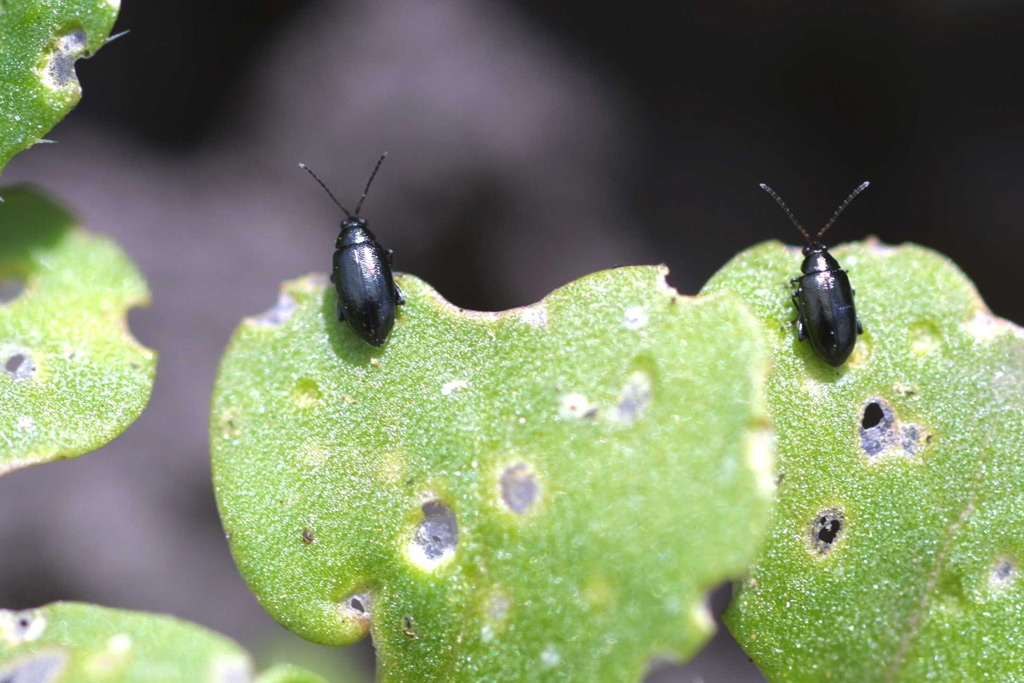Pests and diseases are taking a substantial bite out of the world’s five major food crops — in some cases, up to 40 percent.
Scientists at Penn State, Cornell and four other universities worldwide recently teamed to study and inventory the impact of plant diseases and insects on a global scale.
Who should care
“Declining crop health affects everyone — farmers, consumers and communities — by reducing food supplies, driving up costs, and sometimes even causing the misuse of pesticides and herbicides,” said Paul Esker, assistant professor of epidemiology and field crop pathology in Penn State’s College of Agricultural Sciences.
“This is a crucial problem at a time when food production must be increased to sustain a growing global population, one that is predicted to exceed 9 billion people by 2050.”
However, precise figures on the degree of losses across crops, agroecosystems and regions have been hard to come by in recent years, due to the complexity of agricultural systems and the sheer number and diversity of diseases and pests.
Esker said the last attempt at data collection was done 15 years ago and made inferences on loss based on pesticide use, among other factors.
“Having quantitative, standardized information is vital when scientists and policymakers are setting research priorities,” he said. “Having a full understanding of the problem is needed to develop sustainable solutions.”
To bridge this information gap, Esker began collaborated in 2016 with an international team of crop-health scientists. They started a “deep dive” into the effect of pests and pathogens on wheat, rice, maize, soybean and potato — crops that together represent about half of the calories consumed by humans.
Esker and his colleagues, who published their findings recently, developed a simple online questionnaire that was distributed to crop-health experts around the globe, asking them to provide numerical assessments and observations of their crops.
Responses were received from 219 respondents in 67 countries. These countries collectively are responsible for about 84 percent of the global production of the five crops.
By the numbers
After poring over almost 1,000 responses, the scientists determined that pathogens and pests are causing wheat losses of 10-28 percent, rice losses of 25-41 percent, maize losses of 20-41 percent, soybean losses of 11-32 percent, and potato losses of 8-21 percent.
The data enabled the team to identify 137 pests and pathogens that harm crops and to rank them by level of damage caused.
For example, the scientists found that leaf rust, Fusarium head blight/scab, tritici blotch, stripe rust, spot blotch, tan spot, aphids and powdery mildew caused losses higher than 1 percent globally in wheat.
Among the biggest menaces to rice were sheath blight, stem borers, blast, brown spot, bacterial blight, leaf folder and brown plant hopper.
As expected, the results showed differences in impacts among regions and pests and pathogens. An insect such as the fall armyworm, which thrives in warm temperatures, is a threat to maize growers in tropical regions, especially in sub-Saharan Africa, but is virtually unknown to growers in cooler, northern climates.
Not surprisingly, crop losses in food insecurity “hot spots” — regions that are food-deficient with fast-growing populations such as South Asia and sub-Saharan Africa — were more significant than those in North America.
Esker attributed that to a combination of factors, including inadequate storage facilities, limited use of integrated pest management techniques, lack of resources and technology, and the absence of extension education programs.
What comes next
The researchers hope their assessment will be a catalyst for targeted management programs to counteract the destruction.
“We can see more clearly the key players and problems and can work toward long-term solutions, with the understanding that one size doesn’t fit all — what might work in one region might not work in another,” Esker said.
“This study is not a silver bullet, per se, but should serve as the foundation to sharpen and increase research priorities in plant breeding and pest management.”
Source - https://www.farmanddairy.com












